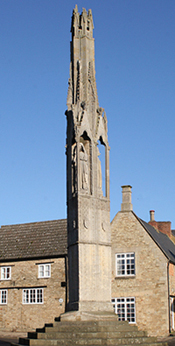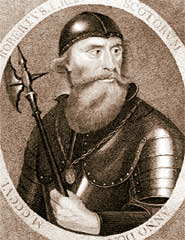King Edward I - Part 4
Throughout his reign, Edward was always totally aware that he would have to administer England efficiently if he was going to fund his at times ambitious military campaigns and indeed to this end he took a great interest in the government of his kingdom. He tried to check and curb the corruption and extortion which had mainly been enjoyed by the barons early in his reign. They had been able to get away with a lot of errant practice before Edward’s reign mainly  due to the highly undisciplined and chaotic reigns of his father and grandfather but Edward still needed their backing if he was to gain the necessary finances for his campaigns. Accordingly Edward sent out commissioners to survey the whole country and make records of local administration whilst at the same time identifying any judicial abuses. Edward insisted that all rights must be clearly defined and set down and that if landowners wanted to stake a claim to have their rights on the basis that they had been held for 'time immemorial' then their rights had to have been established before the reign of Richard I. By the end of Edward’s reign, Justices of the Peace had been introduced and Parliament had evolved to the point where it would include representation from most levels of medieval society i.e. barons, clergy, knights and burgesses.
due to the highly undisciplined and chaotic reigns of his father and grandfather but Edward still needed their backing if he was to gain the necessary finances for his campaigns. Accordingly Edward sent out commissioners to survey the whole country and make records of local administration whilst at the same time identifying any judicial abuses. Edward insisted that all rights must be clearly defined and set down and that if landowners wanted to stake a claim to have their rights on the basis that they had been held for 'time immemorial' then their rights had to have been established before the reign of Richard I. By the end of Edward’s reign, Justices of the Peace had been introduced and Parliament had evolved to the point where it would include representation from most levels of medieval society i.e. barons, clergy, knights and burgesses.
Eleanor of Castile, the wife that Edward had married when he was only 15, died in the year 1290 and Edward who had always loved her was distraught. He ordered that when her body was brought from Lincoln to London, monumental crosses would be erected at each of the 12 places where her funeral procession rested. These are what are known today as Eleanor's crosses -- the best surviving example being at Geddington in Northamptonshire. (Photo right) The many pubs in England with the name Elephant and Castle were in fact named after Eleanor, the name being a corruption of her title: 'Infanta of Castile'. It would be a further 9 years until Edward would marry Margaret, the daughter of Philip III of France in order to secure a peace treaty.
In the later part of Edwards reign, an accession crisis sprang up in Scotland which would 'scotch' Edwards long-held hopes of unification between the kingdoms of Scotland and England. When Alexander III of Scotland died in 1286, Edward betrothed his son to Alexander's granddaughter and heiress Margaret, the  'maid of Norway', but sadly the infant Queen Margaret died on the journey from Norway to Scotland and this put paid to Edward’s plan. Following this sad event, Edward, who was asked to assist in deciding upon a new leader, chose to support to John Balliol in preference to Robert Bruce (pictured left). Probably the main reason that Edward supported Balliol is that he was a much weaker character than Bruce which would of course allow Edward to dominate and in effect rule in Scotland. Balliol was in effect a puppet leader and the Scots very soon grew tired of this situation.
'maid of Norway', but sadly the infant Queen Margaret died on the journey from Norway to Scotland and this put paid to Edward’s plan. Following this sad event, Edward, who was asked to assist in deciding upon a new leader, chose to support to John Balliol in preference to Robert Bruce (pictured left). Probably the main reason that Edward supported Balliol is that he was a much weaker character than Bruce which would of course allow Edward to dominate and in effect rule in Scotland. Balliol was in effect a puppet leader and the Scots very soon grew tired of this situation.
Edward at this time also had the additional problem that Philip IV of France had taken possession of Gascony and the Scots resented having to pay taxes to finance a war against the French. (This would later be resolved after intervention by the Pope) With this in mind, the Scots allied themselves with the French in 1295 and this treaty which would carry on for centuries became known as the 'Auld Alliance'. It was at this time that the Scottish rebel and folk hero William Wallace came to prominence.


